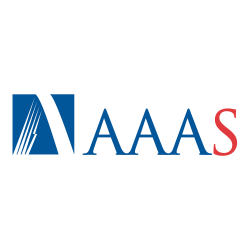Dinko Ferencek (Ph.D. '11, Physics) Talks Particle Physics and #RestartLHC
According to CERN, restart of the Large Hadron Collider (LHC) is merely days away. In anticipation of #RestartLHC, we spoke with alumnus Dinko Ferencek (Ph.D. '11, physics) about his work with the LHC and what he's looking foward to in season two.
Of all the science fields you could have decided to study, why did you choose particle physics?
Ever since I was a kid, I was fascinated by planets, stars and galaxies, and how the universe came to be. However, I never really dreamed of becoming a physicist (I actually wanted to become a pilot). My elementary and high school teachers recognized my aptitude for math and physics and encouraged me to pursue a career in science. In high school, I participated in an International Physics Olympiad representing my home country of Croatia, and that's when I decided to study physics in college. During a summer internship at CERN, I decided to apply to graduate school and pursue a career in particle physics.
Where has your career taken you since you graduated from Maryland?
After graduating from Maryland I joined the experimental particle physics group at Rutgers University where I’ve been working as a postdoctoral research associate on the Compact Muon Solenoid (CMS) experiment at the CERN Large Hadron Collider.
How did your time at Maryland prepare you for your current position?
Just like other graduate students, I deepened my knowledge of physics needed for doing research. But most importantly, under the guidance of my advisor, Physics Professor Sarah Eno, and other members of the CMS group at UMD, I learned how to do science and navigate my way through a large international collaboration such as the CMS experiment.
What is your role in the LHC effort?
I am a member of the collaborative team that is operating the CMS detector, one of the four detectors located along the LHC ring. My role is to help ensure the CMS detector runs smoothly and analyze the collision data the detector collects. For the past two years, I have been in charge of maintaining parts of our software used in the reconstruction of collision events. As a member of several analysis teams, I looked for signals of new particles. More recently, I started coordinating activities in one of the subgroups of the CMS experiment looking for signals of new physics, in particular types of collision events with a lot of hadronic jets.
What are the big questions researchers hope to answer this time around?
Researchers want to know whether there is any new physics beyond the standard model of particle physics accessible at LHC energies and, related to this, what the nature of dark matter might be. Scientists will also study in more detail the properties of the recently discovered Higgs boson.
What does your Rutgers lab hope to answer this time around?
My colleagues and I are looking for signals of one specific type of new physics beyond the standard model, which is called supersymmetry.
Is there anything else you’d like to tell us about?
This is one of the most exciting times in the history of particle physics and we are all anxiously awaiting the LHC restart. With the collision energy almost doubling compared with the previous LHC run, we are hoping to observe signals of new physics and answer some of the biggest questions about the nature of our universe. As we share our excitement with the general public, I hope our work will be an inspiration to the next generations of scientists.
Media Relations Contact: Abby Robinson, 301-405-5845, abbyr@umd.edu
University of Maryland
College of Computer, Mathematical, and Natural Sciences
2300 Symons Hall
College Park, MD 20742
www.cmns.umd.edu
@UMDscience
About the College of Computer, Mathematical, and Natural Sciences
The College of Computer, Mathematical, and Natural Sciences at the University of Maryland educates more than 7,000 future scientific leaders in its undergraduate and graduate programs each year. The college's 10 departments and more than a dozen interdisciplinary research centers foster scientific discovery with annual sponsored research funding exceeding $150 million.



